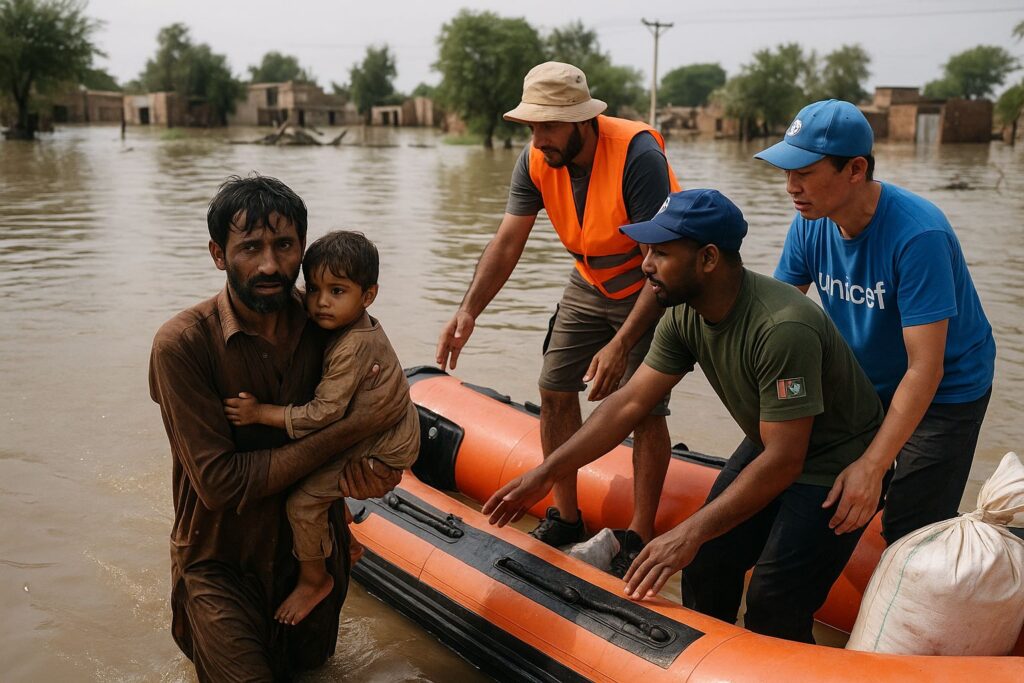
Pakistan is under the burden of horrific floods, defined as a “doomsday scenario“. Torrential rains, glacial soften, and overflowing rivers have mixed to create one of the worst weather screw ups in the nation’s history.
The Scale of the Disaster
The flood drowned a third of Pakistan, making hundreds of thousands homeless. The complete village has been swept away, the farm has been destroyed, and the infrastructure has collapsed. More than 1100 people have lost their lives, at the same time as over 30 million people are affected. The National Disaster Management Authority (NDMA) reports unheard of degrees of destruction, wherein thousands of houses, roads, and bridges are washed away.
International Mourning and Condolences
The international community stands with Pakistan in this sad moment. Nations around the sector have expressed their grief, brotherly love, and dedication to help. Leaders of the United Nations, the United States, the United Kingdom, the European Union, China, and Gulf countries have expressed condolences to vowed to provide humanitarian resources.
- United Nations Secretary-General Antonio Guterres called the flood “monsoon on steroids“, which urges immediate global action to support Pakistan and deal with the climate event.
- The United States announced emergency assistance, emphasizing its long-standing partnership with Pakistan.
- The European Union and the UK made millions of pledges in relief funds and necessary supplies.
- The States of China and the Gulf have already sent aircraft filled with food, tents, and medical equipment.
Pakistan’s Reaction
The Pakistani authorities have declared a countrywide emergency, amassing civil and army forces for rescue and relief operations. Helicopters and boats are being used to evacuate trapped families, at the same time as camps have been set up for displaced groups. However, the sheer scale of the disaster has diluted assets.
The authorities have appealed to the worldwide network for immediate help, highlighting climate change and the country’s direct connection to extreme disasters. Pakistan contributes less than 1% of global carbon emissions, yet it is one of the vulnerable countries to climate change.
Human Crisis
Human pain is very high:
- Millions are without shelter, forced to live in open areas or temporary camps.
- Food insecurity is deteriorating as it destroys plants, livestock, and food shares.
- Waterborne diseases like cholera, diarrhea, and malaria are spreading unexpectedly.
- Children and women are the weakest, going through starvation, loss of healthcare, and unstable situations.
Support agencies warn that Pakistan can face a secondary crisis of illness and famine until immediate help comes.
A Call for Global Action
The tragedy in Pakistan is not only a country-wide disaster; This is a warning call for the world. Climate professionals emphasize that extreme weather events have become more frequent because of global warming. The global network has to now not only offer instant relief, but also work on long-term techniques to address climate change and guide weak nations.
Global Solidarity
From social media campaigns to riding drives, common people around the world are showing harmony with Pakistan. Humanitarian organizations, migrant communities, and volunteers are gathering assets to lessen the suffering of flood sufferers. The heavy worldwide response underlines the message: the world stands united with Pakistan.
In summary, Pakistan is experiencing a weather of historic proportions. With thousands and thousands of displaced people, hundreds of dead, and massive destruction, the USA desires immediate humanitarian resources and long-term climate justice. The world’s mourning and support reflect not only compassion, but also a belief that climate disasters are a threat everywhere.

